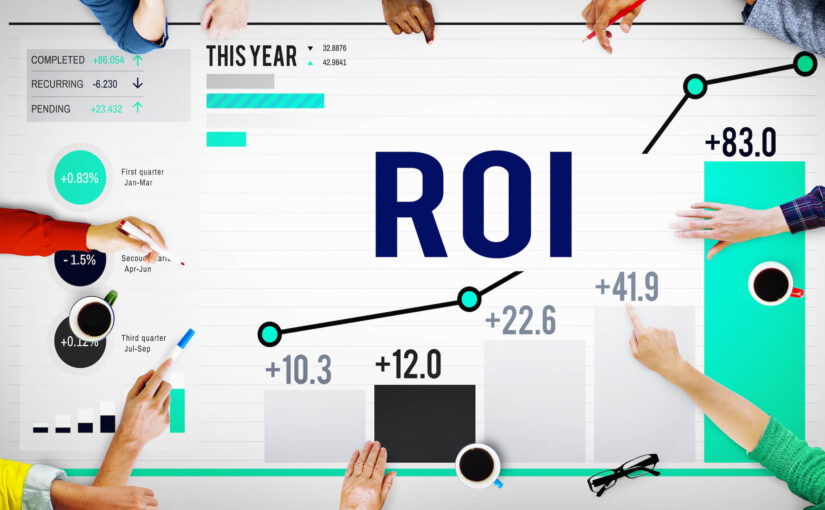Key Takeaways
-
Bad sales hires can lead to costly losses, reduced productivity and lasting customer relationship damage.
-
Sales assessments help identify the right skills, competencies, and cultural fit, reducing the risk of costly hiring mistakes.
-
Using data-driven and objective assessments improves hiring accuracy and minimizes bias compared to relying on gut instincts alone.
-
Evaluating candidates’ behaviors and cognitive abilities provides a comprehensive view of their potential for sales success.
-
Customizing assessments to fit specific sales roles and regularly updating tools ensures ongoing effectiveness and relevance.
-
Focusing on coachability when you’re hiring fosters long-term development and a robust sales force.
Sales assessment helps companies spot strong sales talent and lower the risk of bad hires. Bad hires can lead to lost sales, higher costs, and wasted time on training.
With the right sales assessment, teams can find people who match the job and fit the work style. This process gives companies a clear way to pick the right people.
The main body covers how sales assessment stands against the cost of bad hires.
The Core Conflict
Bad sales hires are a major source of both direct and indirect loss for businesses worldwide. While some costs are easy to spot, like lost sales or wasted salaries, others run deeper—team morale, customer trust, and long-term business growth. Sales assessments have emerged as a solution to counter these risks, but understanding the stakes is crucial for any organization that wants to avoid costly hiring mistakes.
1. The True Cost
The cost impact of a bad sales hire can be as high as $2 million in lost sales. This count encompasses both those deals that fall through and opportunities that never take off. Direct costs accrue quickly too, with companies frequently spending more than $697,000 on salaries, training and onboarding for hires who fall short.
Revenue stalls when weak hires can’t close deals — and that drags back growth and puts pressure on other team members to plug holes. Lost time is just as damaging as lost money. While businesses search for replacements or try to fix mistakes, competitors can move ahead.
Investing in proper sales assessments can help prevent these losses by screening out candidates likely to underperform, making it a smart upfront cost.
2. The Assessment’s Role
Sales assessments check for skills and traits that matter most in sales jobs. They use data-driven tools to judge if someone has what it takes, like resilience, drive, or the ability to learn from feedback. Relying on gut feelings in hiring often leads to a 70% failure rate.
Assessments help find top talent and lower the risk of picking the wrong person. The top evaluations align the firm’s requirements with the requirements of the sales position. This makes the process more than a box-ticking exercise and instead actually helps your business get stronger.
3. Beyond the Resume
Resumes can’t show if a candidate is a good fit for sales. Behavioral assessments add another layer by rating qualities like openness, honesty, and willingness to learn. People who admit their faults are often better learners and work well with others, while those who act defensive may not adapt or grow.
Previous work demonstrates what a person did, but not necessarily what they can do in the future. Marrying work experience with test scores assists identify candidates that might flourish in fresh challenges.
A good fit is the appropriate blend of skills and being able to collaborate with the group.
4. Predicting Performance
Predictive analytics assist in estimating how a candidate will perform. By examining something like Tactical Selling or Sales DNA, organizations can identify potential top sellers. By comparing these scores to previous new hires, it becomes immediately obvious who rises to the top.
Benchmarks based on actual success within the team turn hiring into a more dependable process. Good listening candidates — speaking only 43% of the time, say — tend to be more successful in the end.
5. Cultural Mismatch
Culture fit is as important as sales skill. Values, work style, and fit with the team all shape long-term success. If a new hire clashes with the group, they can suck down morale and cause great people to bolt.
Screening for culture fit is about more than querying hobbies. It’s about the way people work, struggle, and support one another. Businesses that leverage these checks experience less mis-hires and more powerful teams.
Common Hiring Pitfalls
Sales teams are derailed not because of market dynamics, but rather because of hiring mistakes. Most of these errors are easily avoided with a clear, tempered perspective. A few patterns emerge over and over, each with its own price.
One pitfall is overstressing a candidate’s experience. Although industry know-how can help new hires empathize with buyers and learn the ropes quickly, it’s not necessarily predictive of future sales success. Other times, companies select people simply because they’ve been in a similar industry, ignoring the benefit of a new perspective or actual sales talent.
When teams are merely chasing after resumes with lengthy histories of previous roles, they’re overlooking the individuals who can inject passion or innovative strategy into their sales process. In reality, it’s most effective to temper experience with proof of fundamental sales skills, such as active listening and client problem-solving.
Simply trusting your gut is another common error. Even experienced managers hire somebody who just “feels” right in an interview. Studies demonstrate that intuition-based decisions can result in a 50% hiring failure rate. With so much on the line, relying solely on gut is perilous.
B2B companies tend to get the brunt of it, with 40% of sales hires missing the mark. To reduce the guesswork, it’s helpful to rely on data. For instance, examining top performers for common traits or employing structured interviews have been shown to yield improved outcomes. Interviewing a minimum of five candidates for every position — instead of hurrying — provides a wider perspective and reduces the risk of selecting the incorrect match.
Overlooking key sales skills is another issue. Sometimes, hiring teams focus more on charm or general communication than on what actually drives sales performance. Skills like negotiation, resilience, and problem-solving should be at the center of evaluations.
Reference checks, done before interviews, can offer another layer of insight into whether a candidate has shown these traits in real work settings. Not accounting for team fit wreaks havoc beyond sales figures. If new hires don’t gel with the team’s work style, trust and collaboration erode.
It can stall things and even send good people out the door. Group hires can assist, because learning together and trading early victories creates connections and positive competition, while reducing training expenses. When a bad hire gets replaced, the company ends up paying in more ways than one.
The average cost to replace an employee is approximately 6–9 months of pay, excluding lost time and disrupted team momentum.
Assessment Methodologies
Sales assessments use many ways to lower the risk of bad hires. They help hiring managers find who can sell, adapt, and stay with the company. Using structured methods instead of gut feelings matters because intuition leads to right hires only about 30% of the time.
Companies using talent assessments see 39% better accuracy in picking top performers and a 39% drop in employee turnover. The right assessments give a full view of a candidate, especially when 3 to 5 tools are used together, limiting gaps and missed data.
|
Assessment Type |
Advantages |
|---|---|
|
Structured Interviews |
Reduce bias, ensure consistency, support objective evaluation |
|
Skill Assessments |
Identify gaps, test job-related sales skills |
|
Behavioral Assessments |
Reveal work habits and motivation, support coaching |
|
Cognitive Tests |
Measure thinking skills, predict potential for growth |
|
Situational Judgment Tests |
Test decision-making in real-life sales scenarios |
|
Business Simulations |
Assess business sense and strategic choices in practical tasks |
Structured interviews and objective scoring systems actually help remove bias when hiring. These techniques establish an equitable basis upon which to evaluate applicants. Nobody receives an advantage because of gut feel or first impression.
Mixing different assessments is key. Each tool highlights a unique side of the candidate. For example, skill tests show technical knowledge, while behavioral assessments reveal work ethics and teamwork.
Combining data gives a clearer, more balanced view of a candidate’s true fit for the sales role.
Skills
Sales jobs need specific skills. It matters to check for these using targeted tests. Assessments should match the requirements of each sales job.
-
Negotiation
-
Closing deals
-
Relationship-building
-
Communication
-
Prospecting
-
Product knowledge
Skill tests help spot gaps. Teams can use this data to plan training or coaching. Tailoring assessments for each sales role makes sure the right skills are matched to the right job.
Behavior
Behavioral assessments show candidates’ motivation and daily habits. They measure leadership, teamwork, communication, and problem-solving skills. These tests predict future actions by putting candidates in real sales situations.
-
Resilience
-
Adaptability
-
Motivation
-
Accountability
Results from these assessments help design coaching plans. They help managers spot high-potential employees. Companies that use these tools are 56% more likely to grow top talent.
Cognition
Cognitive tests examine problem-solving and decision-making. They consider analytical skills, strategic thinking, and learning speed. These examinations are capable of demonstrating the adaptability of an individual as well.
Cognitive outcomes are augmented by other forms of evaluation information. This provides a comprehensive perspective on both present ability and potential to develop in a sales role.
Situation
Situational judgment tests put candidates in real sales situations. They reveal how folks establish priorities, decide under pressure, and deal with tough customers. Applicants have to work out actual business problems, as in business cases.
These exams identify candidates who remain cool, behave intelligently, and take decisive actions on the pitch. This aids in forecasting how successfully a person will perform the role once hired.
Customizing Assessments
Custom sales assessments work best when they match the real needs of the job and the company. Every sales role calls for its own set of skills, from relationship building and problem-solving to closing deals. What works for one team may not fit another. By shaping assessments around the key skills needed for each role, companies can spot who is the best fit early on.
For example, a sales role focused on finding new clients may call for strong cold-calling skills, while a job in account management may need more skill with client care and follow-up tasks. Using hands-on tasks, like real-life sales calls or case studies, helps both the company and the candidate see if there is a good match. In fact, 63% of applicants say they find simulations to be real and useful. Hiring managers agree, as these tests help pick out top talent who can handle the job day to day.
Then you define your answer rubrics. In other words, the criteria should correspond to what really matters to the team and the company. If a company values teamwork, the test must demonstrate how an individual collaborates with colleagues in a sales context. If hitting benchmarks is crucial, then the exam should reflect how well an individual can establish and achieve objectives.
Providing information about the process, such as the number of role-play rounds or their duration, allows candidates to anticipate what’s coming. That’s crucial to all, but especially for younger jobseekers, because 18–24-year-olds are seeking equitable methods to prove their knowledge.
It is key for assessments to work in different sales settings and markets. As sales teams may sell in different countries or to many types of buyers, the tools need to show how someone acts in different places. For example, a role-play for selling a tech tool in Europe may be different than one for selling the same tool in Asia.
By keeping the tests close to real work, candidates feel the process is fair and see how their skills match with daily tasks. Short, clear, and direct assessments—preferably under 20 minutes—help keep candidates positive and engaged.
Staying current is just as important as building the test itself. Reviewing and updating assessments every year helps keep them fair and useful, as markets change and company needs shift. Giving candidates updates, feedback, and status notes along the way keeps them in the loop and less stressed.
These steps help both sides—candidates feel seen and heard, and companies get better hires.
Technology’s Role
Technology has changed how companies find and choose sales talent. It lets hiring teams run sales assessments in ways that save time, cost less, and pull in more candidates. Unlike old paper tests or face-to-face interviews, online tests can reach people anywhere, at any time. This helps get a wider range of applicants, which is key for global companies or those hiring fast.
With tech, companies can give everyone the same test, so the process stays fair and clear. Computerized tests for hiring have been around for decades. Now, the options are much more advanced. Companies use cognitive ability tests to check how well someone solves problems or learns new things.
Personality tests look at traits, like openness or resilience, that help in sales. Situational judgment tests ask candidates what they would do in real-life sales scenarios. Some firms go further, using game-based tests or even virtual reality to see how people think and act under pressure. These tools, if designed well, are short and engaging, so people do not get bored or drop out.
One huge benefit from technology is how it can assist in removing bias. If we all grade tests the same way, every single time, there’s less danger that we’ll subconsciously let personal preferences influence the outcome. This assists hiring teams identify who can do the work — not just who matches their style.
Still, do verify that tests work for all. For instance, a test with difficult English vocabulary could be detrimental to ESL speakers. Businesses must ensure their technologies are equitable. Data is another huge bonus. Tech simplifies gathering multiple pieces of information on each candidate.
More sophisticated analytics groups such data and detects patterns not evident in a standard interview. For instance, analytics might reveal that those who ace a particular test sell more. That helps hiring teams select the right people and steer clear of costly bad hires. The data is only valuable if teams know what to do with it. Training and clear plans are still required.
Studies indicate that approximately 70% of employers actually utilize pre-employment tests at this point. These tools provide a more comprehensive view of a candidate’s capabilities, as opposed to their interview or resume. By leveraging tech, organizations can identify high potential, accelerate sales hiring and reduce bad hire risk.
The Coachability Factor
Coachability is at the core of long-term sales success. It’s being coachable — the capacity and desire to embrace growth, flexibility, and feedback. What many organizations look for is sales skills or experience, but they often miss coachability during the hiring process. This matters since coachability is THE best predictor of new hire success.
Indeed, a three-year, 5,000+ hiring manager study discovered that almost half of new hires failed within 18 months — and coachability contributed heavily to the downfall rate. Measuring coachability is not as simple as ticking off a skill on a resume. Recruiters and hiring managers don’t have the right tools or training to judge it well. Most use gut feel, first impressions or assumptions and therefore have blind spots.
Bias creeps in and folks can get caught up by a candidate’s charisma or previous victories overlooking important indicators of coachability. If you’re a candidate who comes into an interview and says ‘I don’t know everything and here’s one time I messed up’ — that’s exhibiting coachability. Conversely, a candidate who becomes standoffish or evades sharing weaknesses could have difficulty taking feedback in a real work environment.
Feedback is a huge component of sales positions, because markets and products and customer requirements are always shifting. Coachability is what enables your team members to stay up, converge, and better fit in the team. When screening, inquiring candidates about a moment they received feedback and how they managed it can expose their true mentality.

Others incorporate role-play or feedback exercises in interviews to observe candidates react in the moment. For instance, providing a candidate with a sales pitch assignment, then giving them immediate feedback, can demonstrate whether or not they actually listen and adjust their approach. Those who adapt their pitch according to guidance tend to survive. Those who dismiss the feedback or become defensive can struggle to evolve in the position.
Coachability is not entirely up to the candidate, either – it’s sculpted by the workplace. Most line managers are eager to coach but aren’t good at it. This gap can make it more difficult for even willing learners to improve. That makes it all the more critical to hire people who are hungry to improve and who seek feedback on their own.
Creating a culture where feedback is commonplace and safe encourages growth. When organizations put coachability at the center of their recruitment, they create teams that can adapt, learn rapidly, and collaborate—essential traits in sales.
Conclusion
Sales teams lose time and money on hires that miss the mark. A good sales assessment can spot skill gaps, red flags, and fit before a bad match gets on the floor. Skipping this step means more churn, more training costs, and less trust in the process. Custom tools and simple tech help hiring managers see who can sell and who needs more work. Focusing on coachability, not just past wins, builds stronger teams with less turnover. To get better hires, try a sales assessment before the next round. Share your thoughts or your own stories with hiring—real stories help everyone learn and grow.
Frequently Asked Questions
What is the main difference between sales assessments and hiring based on intuition?
Sales assessments use data and structured tools to measure a candidate’s skills. Intuitive hiring relies on gut feeling, which can lead to mistakes and bad hires.
How do bad hires affect sales teams?
Bad hires drag down team morale, productivity and turnover. They generate additional recruiting and training expenses.
Why are assessment methodologies important in sales hiring?
Assessment methodologies provide a consistent way to evaluate candidates. This reduces bias and helps find people with the right skills for the job.
Can sales assessments be customized for different markets?
Yes, sales assessments can be tailored to fit specific industries, products, or regions. Customization improves accuracy in matching candidates to roles.
How does technology improve the hiring process?
Technology automates candidate screening, provides data-driven insights and essentially saves in hiring time. This translates into smarter hiring and fewer errors.
What is the coachability factor in sales assessments?
Coachability gauges how receptive a candidate is to learning and feedback. High coachability means they can adapt and improve, which is crucial for sales success.
Are sales assessments suitable for global teams?
Yes, many sales assessments are designed for international use. They focus on universal skills and can be adapted for different cultures and languages.















